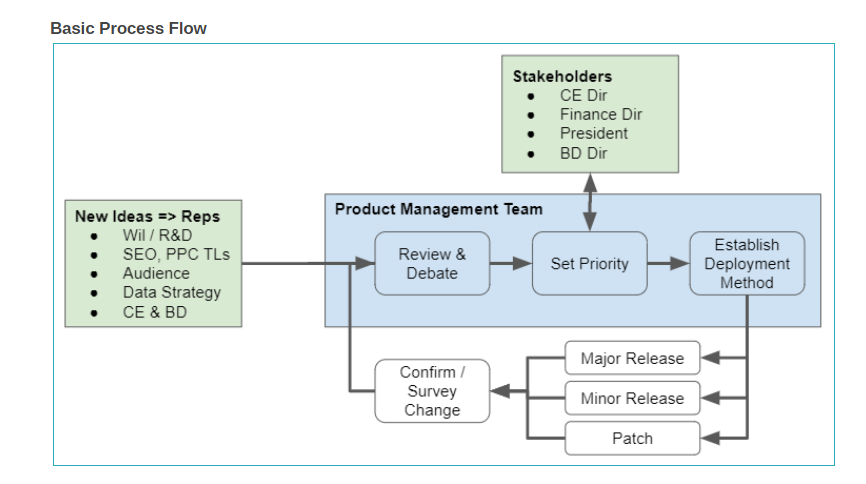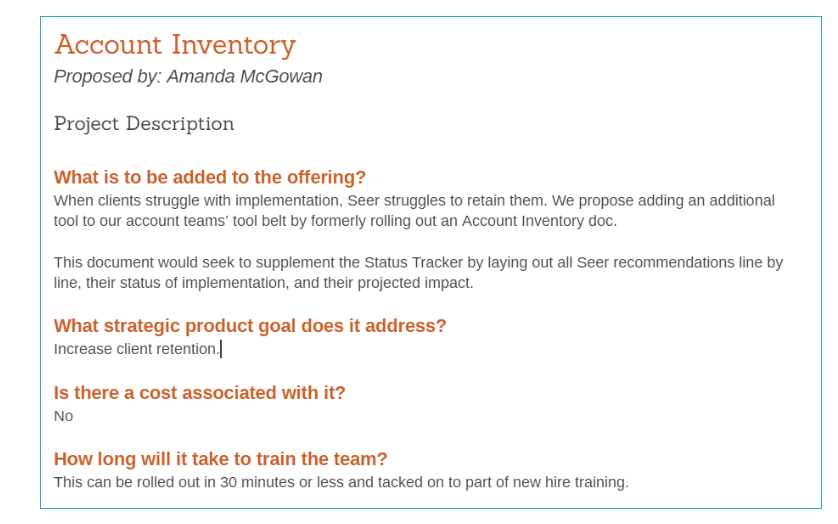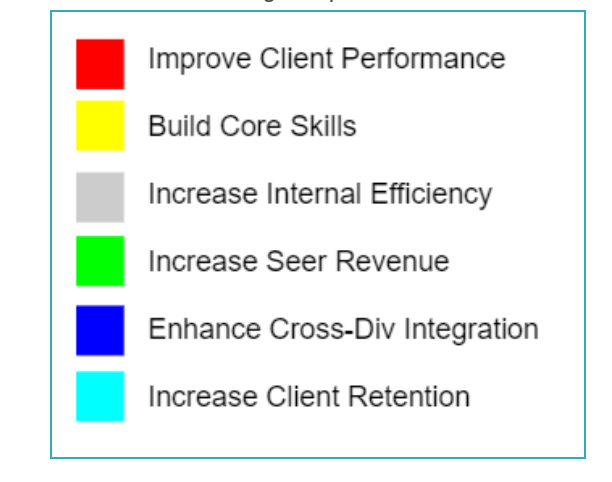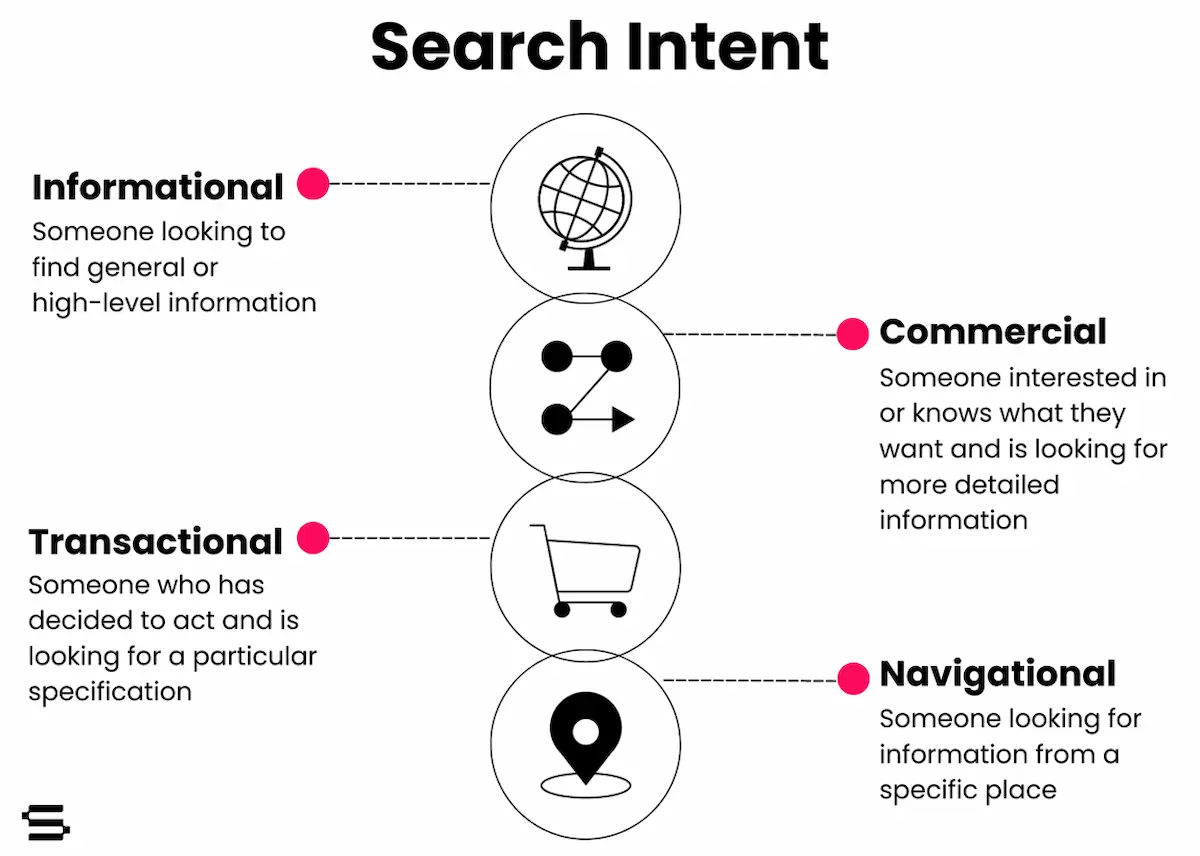Are you exploring ways to better integrate teams in your agency or consulting firm? Take a look at how we are approaching change management and see if using a software development approach can work for you!
For some time now, Seer has extolled the virtues of "breaking down silos" with our clients: getting public relations, SEO, creative and paid media teams, for example, to talk to one another. Heck, we put on a conference at our San Diego office devoted to that very topic.
Thing is, looking in the mirror we found, somewhat uncomfortably, that some pretty tall and thick walls separated our own PPC, SEO, Analytics, and Creative divisions (file this realization under, "Doctor, heal thyself!").
At the same time, our clients have evolved and are more complex than ever, requiring and expecting greater expertise, innovation, and sophistication from Seer.
We’ve also grown to a size where change management (or the lack thereof) has become a major issue. We’ve held "innovation days," launched Task Forces, and have come up with killer ideas at strategy off-site meetings, but without a process for taking great ideas and scaling them across the organization in a methodical way, many died on the vine. Sound familiar?
(Once upon a time, Wil could stand up from his desk, say “Time for an all-hands meeting to learn something new,” and all 8 souls rolled their chairs in a circle. With Seer now at 180 employees including 20 folks working remote and offices in San Diego and Philadelphia (and, suspiciously, 5 remote workers in Chicago), those days are long gone)
Starting with our SEO Division and now including our PPC Division, we have adopted a simple software development model as a mechanism to not only more deeply integrate our divisions, but also ensure new ideas and processes are deployed across the enterprise.
The critical change mechanism is our “Release Day,” when Seer rolls out new versions of our offerings.
________________________________________________________________________
Poor Change Management: The Symptoms
When I first became Director of SEO, I attended MozCon and, like many others, was wowed by what our founder, Wil Reynolds, threw down during his talk. I caught up with him at the back of the venue once he got off stage and said, "Um, I'm not sure we actually sell that today." Wil laughed and pointed out that his goal was to show the audience his vision of the future of search, but he did voice a concern that the SEO division may be using an approach to search that was dated using training and processes that were possibly a decade old.
Seer was delivering performance for clients of course, but the problem was that our team's knowledge was truly tribal, atomized, and idiosyncratic. In other words, each account manager had to depart from Seer's "standard" SEO script pretty significantly to meet the needs written in client Statements of Work (SOWs).
What's more, what was enshrined in Seer's SEO SOWs didn't always reflect the state-of-the-art that Wil was evangelizing on stages around the world. The risk I and our SEO Associate Directors Alisa Scharf and Ryan Fontana saw was twofold:
⚠️ Risk One: After seeing Wil's presentation, clients may come to Seer expecting to get what they saw on stage and discover that our SEO account teams may not uniformly be equipped to deliver it.
⚠️ Risk Two: Wil and our SEO team innovate constantly and there was no mechanism to systematically, and continuously, roll out new ways of doing things over time.
Given our agency-wide push to leverage tools like PowerBI to parse large data sets such as Search Query Reports, organic rankings, crawl data, Google Search Console data, and analytics data, it was apparent that Seer’s divisional silos would get in the way of bringing new search insights to clients. So, a critical, additional risk soon emerged:
⚠️ Risk Three: Seer didn’t have a scalable mechanism to more deeply integrate our divisions.
Other symptoms of a poor change management approach we identified were:
- Lack of process uniformity: Our team of 23 Account Managers approach the same deliverable in 23 different ways.
- Jumbo emails: Pushing a new idea or deliverable often involved a "War and Peace"-length email with links to various Google Docs that we suspected didn't get read.
- Limited Quality Assurance capability: We had no systematic way of knowing how (or if!) new approaches were adopted or consistently followed.
- No way to roll out "big changes": The "jumbo email" was more or less OK for modest changes, but we had no way of making burn the boats, we're doing this a new way changes across a division of 70 people.
- Confusion on what is in the "core" SEO offering: There was no real "bible" of what was in Seer's SEO offering. Our Business Development team would ask, "Hey, can we do X?" and we'd scramble pinging various SMEs across the division to see who knew how to do what.
- Brilliant ideas hidden: Individual project teams routinely came up with amazing wins, but we had no way of systematizing them (see "Jumbo emails," above)
Change Management Solution: Software Development
Like many ideas, this one hatched while I was in the shower -- I had been noodling on the need to drive change across the SEO division in a controlled fashion.
But the thing about SEO (and digital marketing in general) is that it constantly evolves.
There is always a new tool, a new approach, a change in Google's algorithm, or a new SERP landscape feature, not to mention, all the innovation Wil and the team drive. What came to mind was the product manager in the SaaS energy startup I was in before I joined Seer. I remembered the monthly product management meetings and the software product "roadmap" that he owned.
That product road map was a living, breathing document at the nexus of everything:
- Strategic insights from our founder, board, and investors
- Product feedback from our customers and operations team
- Development constraints, capabilities and efficiency recommendations from our software development team
- New ideas and approaches from our CTO and head of R&D
- Market and competitive insights from our sales, marketing and customer care teams
What literally drove the software product forward in terms of client-facing capability was each incremental new software release.
Why couldn’t a consulting firm take the same approach?!
From that initial spark, we’ve developed a complete agency change management model over the past year, featuring a SEO and PPC Product Management Roadmap, Major Releases, Minor Releases, Patches, and a Product Management Team. We started with SEO and now are folding in our PPC division.
To motivate the use of this approach, we first observed that Seer's digital marketing offerings fundamentally consisted of:
💡 Hard skills: The nuts and bolts of being a subject matter expert and strategist in SEO or PPC.
🤝 Soft skills: The craft of being a consultant and adviser to clients, and contributor on a team or in a division.
🔄 Processes: How Seer does things; the steps taken and their sequence in order to deliver for clients and operate a team or the division.
🔨 Tools and templates: How to use Power BI, STAT, Kenshoo, ahrefs, etc. as well as established internal templates like Opt Plans on our PPC team or Keyword Matrices on SEO.
Thus, a new release of our SEO offering, via a periodic, all-hands “Release Day” of training could feature the deployment of a new process for doing something, the roll out of a new tool, or training on how to be a more empathetic consultant.
The key message for the team during "Release Day" is that there may be things that we will ask folks to:
▶️ Start Doing
⏹️ Stop Doing
🔂 Continue Doing
We may ask folks to burn the boats in terms of a given past practice: we may deprecate Deliverable A and wholly replace it with Deliverable B during Release Day such that hence forth, creating Deliverable A for a client will be unacceptable and be rejected by a Team Lead before submission to the client.
Product Management Team
We've just rolled out the Product Management Team (see below on implementation).
It consists of leading members of our Data Strategy Team, PPC and SEO Division directors, and Team Lead reps from both divisions. Other stakeholders include our CEO, President, head of Client Engagement, head of Business Development, and Director of Finance.
Given the speed our industry moves, the Product Management Team meets bi-weekly, and it's their job to:
- Receive recommendations for things to add or remove from our offerings
- Establish priority with input from stakeholders
- Determine the timing and method of deployment (e.g. Major Release, Minor Release, or a Patch)
- Maintain the Road Map through time of what is included in our "core" SEO and PPC offerings and, critically, given where Seer is going strategically as an agency;
- Identify synergies between SEO and PPC processes and deliverables, and find ways to leverage big data sets to drive cross-divisional client strategy

SEO & PPC Product Roadmap
The roadmap itself is a simple template that governs the flow, prioritization, and the method and timing of deployment of new ideas and requests for additions, or changes to our offerings.
Representatives for the major stakeholder teams, such as the SEO and PPC divisions, Client Engagement, BD/Sales, and Audience Research, submit ideas via “Product Briefs.”
The Product Briefs answer basic questions such as what are strategic goal of the change? What is the cost and Estimated training time? The Product Brief also addresses the strategic goal of the change.
Example of a Product Brief

During the bi-weekly Product Management Meeting, the Product Briefs are given a numerical score using a Fibonacci method, debated, and then prioritized.
Based on the level of priority and strategic goals, the Product Management Team then determines the best method to deploy the change (e.g. wait for the next Major Release, schedule a Minor Release, or roll out immediately via Patch).
Product Brief Strategic Impacts:

From that point, product briefs will move through many combinations of the following phases....
Backlog
The backlog consists of Product Briefs that have been submitted to the Product Management Team via the Team Reps. The Product Briefs are reviewed and scored as part of the prioritization process.
In Design
Product Briefs in this stage have obtained a threshold-level of priority and are assigned an owner (on the Product Management Team or outside of it) to turn the brief into a more robust plan, including recommendations on deployment method and timing, alignment or consolidation with existing training, tools, know-how etc.
The owner would also assess if this new update would replace something the SEO or PPC account teams are already doing, and work out how to test if the update is working, post deployment.
In Build
At this stage, the deployment method and timing have been decided and the update owner is actively building out the training: workshop style, classroom instruction, small group, etc. Is it a game with prizes? Do we need outside speakers or Seer senior leaders to role play as client execs, etc.?
Major Release
Major Releases occur twice a year (Spring and Fall) and represent major changes being made across one of Seer's divisions. These can include both hard skills (How to Combine SEO and PPC Data Using Power BI and Audience Research Basics) and soft skills (Answering Tough Client Questions and How To Introduce Yourself to Clients).
Major Releases are all-day training sessions for the entire division, across both-coasts, and tend to feature.
Minor Release
A Minor Release can occur anytime and generally lasts 90 minutes and requires about six weeks to plan. It's a training and content delivery window impacting the entire division on both coasts on the same day, but not necessarily at the same time. We've had one minor release so far on the SEO Division to provide initial training on PowerBI back in February of this year.
Patches
A Patch is something that is high-impact, time-sensitive, and relatively easy to digest. Deployment can take a couple forms: a team of trainers attends the weekly Team Lead meeting for each team in the division (On SEO, we have eight such teams) over the course of several weeks, or we train the group of Team Leads who in turn deliver the content to each of their teams simultaneously. The SEO Division has used patches to rollout new processes and templates for Audience Research, for example.
Note: Patches and Minor Releases can occur throughout the year, with Major Releases occurring at fixed times.
Communications and Stakeholders
Natural stakeholders include our founder Wil, our President Crystal O’Neill, and division directors who provide us with corporate strategic direction, as well as leaders on our Business Development and Client Engagement teams.
We are practicing the DACI approach, whereby there are senior leaders who are Informed of decisions and others who are Consulted as the Product Management Team deliberates (thanks Audrey!).
The Product Roadmap will be accessible for viewing by everyone at Seer, and ideas can come from anyone at Seer. Each team will be able to establish their own means of bubbling up ideas to their Team Reps (e.g. innovation days, suggestion boxes, taking showers).
Incorporating Seer’s Audience into the Process
We found that the basic building blocks for a robust mechanism to get audience insights and “voice of the client” into the heart of our change management system already existed:
- Client Engagement (CE): Our CE team covers about 50% of Seer’s revenue base today and CE folks are in constant communication with our existing clients. Via CE, we hear about client pain points and business goals, and we often receive requests for new ways Seer could possibly help them.
- Business Development / Sales: Our BD team, similar to CE, is in the market constantly gaining a treasure trove of information. In this case, BD speaks with a vast array of potential clients of various sizes and business models and all industries. They arguably hear more about client pain points, needs and fears, our competitors' offerings and new technologies than anyone at Seer.
- NPS & Periodic Client Surveys: Seer is a big believer in NPS, and this bi-annual effort also brings in ideas from existing clients. From time to time, we also send brief surveys to clients asking about possible service offerings, or their investment in different tools or channels.
Our ongoing stakeholder process is designed to pull in these insights, and via the Reps, turn opportunities and ideas into new SEO and PPC “feature” requests.
Implementing the Solution
A year ago, we started to implement the new change management solution with Seer's very first Major Release on the SEO Division that we referred to as "SEO Release 3.0." (Release 1 was how Wil founded Seer 16 years ago; Release 2 was the "RCS" era; Release 3 ushered in the concept of audience first -- people ahead of clicks.)
It was an all-day training across both Seer offices and featured role playing and small-group exercises, traditional "classroom style" instruction, prizes, and candy for asking questions during Q&A sessions.
It was during our first Release Day that we began to communicate to the team the concept of burning the boats: that as a division, we may enter a release day doing something one way, and leave that release day no longer doing it at all.
We sent a notice to our clients well in advance, letting them know that their account teams would be unavailable on Release Day, and all members of the division blocked their calendars. Afterwards, we conducted a survey to see how the team liked it and folks were asked to rate all training sessions and provide feedback. The response was overwhelmingly positive.
In February, 2018, we held our first SEO Minor Release -- SEO Release 3.1 -- which included training on PowerBI basics and using the tool to sift through a large data set to find competitive insights.
In April, we held SEO Release 4, a Major Release that provided even more instruction on using PowerBI to combine SEO and PPC data, as well as training on psychology in marketing, a new approach for audience research, and training on establishing ROI for SEO recommendations.
Immediately following SEO Release 4, we added new Data Strategy deliverables to our standard SOW, and we deprecated our old way of doing competitive analysis.
Boats were burned!
In July, 2018, our PPC Division jumped in with their first Major Release. That too focused on training on PowerBI, and also included training on client communications, calculating client profitability, and answering tough client questions. Seer’s next Major Release day will be in November 2018 and it will be our first joint Release between SEO and PPC.
For the Spring 2019 Major Release, we expect an even greater level of integration and harmonization across our SEO and PPC Divisions.
As mentioned earlier, we have also stood up our Product Management Team and as of today, we have dozens of proposed additions and modifications to our SEO and PPC offerings in the Backlog including:
- New PowerBI templates to address client search problems such as how much content to create for SEO
- Cross-Divisional PPC re-targeting basics
- How to build trust and rapport with clients
- Overhauling our PPC competitive insights deliverable to leverage PowerBI, and more!
The Product Management Team is now establishing priority for all of these items based on Seer’s strategic goals, and will soon decide what should be deployed in November, what can follow in a later Minor Release, and what can be pushed out quickly via a Patch.
The discussions are bound to be lively, especially when we fold in input from senior stakeholders and there will be horse trading.
And that's exactly what we want!
Results
First, some caveats: it’s still early days for us on rolling out this solution, and we’re not software developers! With that out of the way, so far the results have been very, very promising:
✅ For the first time, we have a cross-divisional team discussing and debating the core components of the SEO and PPC divisions’ service offerings.
✅ We are in the process of planning our first joint Major Release in November 2018.
✅ We are now actively identifying deliverables and processes that are similar across divisions that can be fully harmonized.
✅ We have full visibility into a common “backlog” of vetted ideas from across our teams ready to be prioritized and deployed.
✅ AND, we can confidently articulate to Wil, to our president, Crystal O’Neill, and to our BD team, precisely what is in our offerings today, what will be added or depreciated, and by when.
Conclusion
So, far from perfect and far from complete, Seer is in the process of implementing an approach to facilitate change over time in an industry that changes rapidly, and in an agency that strives to be at the cutting edge of search.
Our clients continually grow and evolve along with our industry. Seer needed a means of delivering the best solutions possible to our clients.
Founded loosely on a model of continuous software development, we believe our change management approach leveraging Major and Minor Releases, Patches, and a Product Management Team will allow us to:
- Deploy change and innovation through our SEO and PPC teams in an organized fashion.
- Incorporate ideas and feedback from a wide array of Seer stakeholders.
- Facilitate the integration and harmonization of our SEO and PPC tools, methods and deliverables over time.
- Accelerate the adoption of our founder Wil's new approaches and techniques in a way that scales as Seer grows.
Are you figuring out how to deploy change and new capabilities across your organization? Have an approach that has worked and you're now scaling up? I'd love to hear about it in the comments below!



